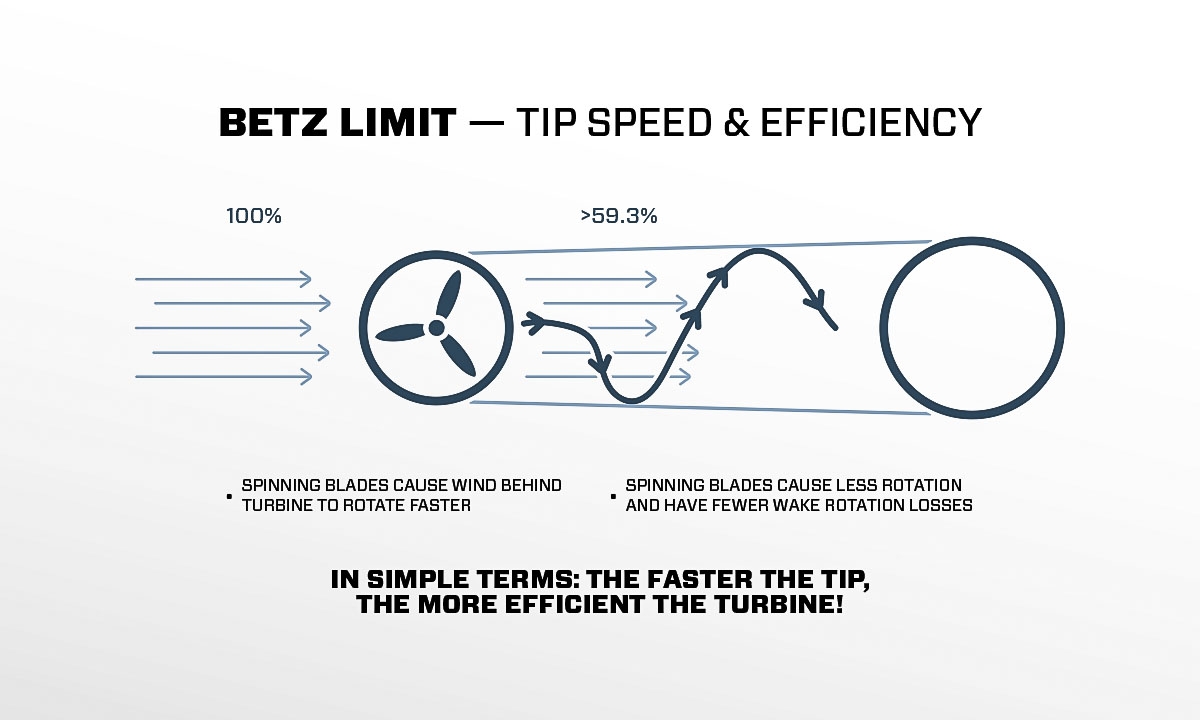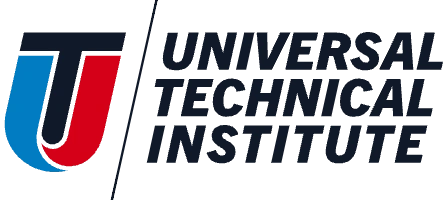Renewable energy isn’t just preferred, it’s necessary, and wind power is one of the most widely used sustainable solutions.
But have you ever wondered what happens inside those towering wind turbines?
If you want an in-depth understanding, you’ve got to develop math and physics reasoning skills. Through Universal Technical Institute's Wind Turbine Technicianprogram, you'll gain an understanding of the math and physics behind wind turbines, and how to apply this knowledge in the real world. 1
Stay tuned to discover how math and physics come to life in wind turbine technology, and how UTI's curriculum makes industry-aligned learning accessible to aspiring technicians!
How Do Math and Physics Play Into Wind Turbines?
Math and physics are fundamental in the design and operation of wind turbines. Calculations involving algebra and calculus are used to design blade shape and size. Technicians can also use physics to determine the efficiency of the turbines.
That’s just the tip of the iceberg, of course. Point is, these disciplines help make sure that wind turbines operate durably and at peak efficiency!
Wind Turbine Math
Wind turbines convert the wind’s kinetic energy into mechanical power. One key formula is the calculation of the power in the wind, which is proportional to the cube of the wind speed, the air density and the area swept by the wind turbine's blades.
.jpg)
This relationship highlights how small increases in wind speed can significantly increase the power output.
Key Components in Wind Turbine Math
Efficiency also plays a critical role in wind turbine functionality. No turbine can convert 100% of the wind's kinetic energy into mechanical energy, which is described by the Betz limit.
The Betz limit, or Betz's law, states that the maximum achievable conversion efficiency of a wind turbine is approximately 59.3%. This means that over half of the wind's power passing through the turbine can be harnessed. A portion is inevitably lost due to physical limitations and inefficiencies. Both these aspects — power calculation and efficiency — are crucial for understanding wind turbine performance.
Wind Turbine Physics
Wind turbines convert the kinetic energy of the wind into electrical energy. The principle behind a wind turbine is straightforward: when wind moves across the blade of the turbine, a difference in air pressure is created on either side of the blade.
The higher pressure on one side and the lower pressure on the other causes the blade to move, driven by the wind. This motion turns the rotor connected to the turbine's main shaft, which spins a generator to produce electricity.
Key Components in Wind Turbine Physics
The efficiency of a wind turbine is influenced by its design, including the shape and material of the blades, and its location. For instance, the height of the turbine plays a crucial role since wind speed increases with altitude. Also, the angle and the number of blades can impact the turbine's efficiency; most turbines have two or three blades designed to rotate perpendicularly to the wind, optimizing energy capture.

What Math and Physics Are Taught in Wind Turbine Classes?
Learning math and physics is an important part of the Wind Turbine Technician program at UTI. Our math curriculum covers algebra, trigonometry and calculus, teaching students to calculate energy production and efficiency, which is crucial for optimizing wind turbine systems.
Algebra is essential for understanding the basic principles behind wind energy conversion, while trigonometry is used to calculate the angles and forces acting on the turbine blades. Calculus is fundamental in modeling the dynamic behavior of wind turbines under varying wind conditions.
Physics, on the other hand, plays a central role in understanding the principles behind wind energy conversion. Students learn about how wind interacts with turbine blades, generating lift and drag forces. Learning about thermodynamics can help aspiring techs understand the principles behind the conversion of mechanical energy into electrical energy and properly analyze the structural integrity and mechanical behavior of turbine components under operational stresses.
Of course, textbook work doesn’t define UTI’s wind tech curriculum, especially since working in the field is ultimately hands-on! Wind students also train to apply this knowledge to real-world scenarios, analyzing wind patterns and turbine components and optimizing performance. This learning model ensures that graduates are ready to pursue entry-level roles in the field.
FAQ
1. How Does the Physics of a Wind Turbine Work?
The physics of wind turbine operation is based on the principle of converting kinetic energy from wind to electrical energy via a process initiated by airflow that causes turbine blades to spin. The efficiency of this energy conversion depends on blade design, wind velocity and the turbine's optimal placement concerning wind direction.
2. What Are the Key Components Involved in Wind Turbine Physics?
There’s the rotor, which captures wind energy. Then there’s the generator, which converts it into electrical energy. The interaction between airflow and the rotor blades is key in optimizing turbine power generation.
3. What Are the Mathematical Principles Behind Wind Turbines?
The underlying math behind wind turbines includes Bernoulli's principle , describing how the velocity of the air decreases while its pressure increases when moving along the curved surface of the blades. These concepts also include the conservation of angular momentum, which explains the conversion of wind energy into rotational energy to generate electricity.
4. How Does the Physics of Wind Affect the Efficiency of a Wind Turbine?
Higher wind speeds increase the potential energy captured by the turbine's blades, leading to greater electricity generation. However, turbulence and changes in wind direction can negatively impact efficiency by causing fluctuations in rotational speed and mechanical stress on the turbine components.
5. What Role Does Wind Speed Play in Wind Turbine Physics?
Wind speed plays a crucial role in the physics of wind turbines, as the amount of energy that can be extracted is directly proportional to the cube of the wind speed. This means that even small increases in wind speed can lead to significant increases in power output, making efficient wind capture and conversion fundamental to the turbine's design and location.
6. How Do Wind Turbine Blades Use Physics To Harness Wind Energy?
Wind turbine blades are designed based on principles of aerodynamics, allowing them to capture wind energy. As wind flows over the blades, differences in air pressure are created on either side of the blade, causing the blades to lift and turn. This motion is then converted into electrical energy through a generator located within the turbine.
7. How Do Wind Turbine Designs Optimize Physics Principles To Maximize Energy Production?
The shape of the wind turbine blades is engineered to capture the maximum amount of wind energy through lift rather than drag, allowing for more efficient rotation and energy generation. Wind turbines are also often strategically placed in locations where wind patterns are strongest and most consistent to generate as much electricity as possible.
Learn Wind Turbine Math and Physics at UTI!
Wind turbine technician training can help you gain industry knowledge, which includes wind turbine math and science reasoning skills. So, if you’re interested in learning how to tackle technical challenges in the industry, join us and graduate in 30 weeks!
Want to learn more? Visit our website to request more info or contact our Admissions team at 1-800-834-7308.
Universal Technical Institute of Illinois, Inc. is approved by the Division of Private Business and Vocational Schools of the Illinois Board of Higher Education.



